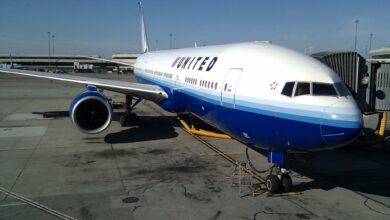How to Apply for Skill Worker Jobs in USA with Visa Sponsorship
The United States has long been a land of opportunities, attracting skilled workers from all over the world. Securing a skilled worker job in the USA with visa sponsorship can open doors to better career prospects and a brighter future. If you’re a professional with specialized skills looking to work in the U.S., understanding the process can help you achieve your goal. This guide will provide a step-by-step approach to applying for skilled worker jobs in the USA with visa sponsorship, ensuring compliance with all legal requirements.
What Are Skilled Worker Jobs and Why Visa Sponsorship Matters?
Skilled worker jobs in the U.S. encompass roles that require specialized knowledge or expertise in areas such as healthcare, technology, engineering, finance, and education. Companies in the U.S. often sponsor international workers for visas when they cannot find suitable candidates locally. Visa sponsorship means the employer supports the legal process for you to obtain a visa, allowing you to work legally in the U.S.
Eligibility Requirements for Skilled Worker Jobs
Before applying, ensure you meet the qualifications for a skilled worker job and the requirements for a work visa. The most common visa for skilled workers is the H-1B visa, which mandates:
- A bachelor’s degree or equivalent in the relevant field.
- Proof of specialized skills or experience.
- A valid job offer from a U.S.-based employer.
Researching Opportunities
Finding the right job is crucial for securing visa sponsorship. Start by researching companies in your field that have a history of hiring international employees. Some effective ways to find opportunities include:
- Online Job Portals: Websites like LinkedIn, Indeed, Glassdoor, and Monster frequently list job openings that specify visa sponsorship availability.
- Company Websites: Many companies advertise job openings directly on their careers page, which may include details about visa sponsorship.
- Professional Networks: Joining professional associations and attending industry-specific events can help you connect with potential employers.
Tailoring Your Resume and Cover Letter
When applying for jobs in the U.S., your resume and cover letter should highlight your skills, qualifications, and work experience. Tailor these documents to each job application, emphasizing how your expertise meets the employer’s needs.
Key tips for an effective resume:
- Focus on achievements and measurable outcomes.
- Use clear and concise language.
- Include a professional summary that highlights your strengths.
A compelling cover letter should:
- Demonstrate your understanding of the company’s goals.
- Explain why you are the ideal candidate for the position.
- Highlight your willingness to relocate and your need for visa sponsorship.
Applying for Jobs
Submit your application through the employer’s preferred method, whether it’s an online portal or email. Ensure all documents are in the correct format and error-free. Follow up a week or two after submission to express continued interest and inquire about the status of your application.
Understanding the H-1B Visa Process
Once you secure a job offer, your employer will file an H-1B visa petition on your behalf. Here’s an overview of the process:
- Labor Condition Application (LCA): The employer submits an LCA to the Department of Labor to certify that hiring you won’t negatively impact U.S. workers.
- Filing the Petition: The employer files Form I-129, Petition for a Nonimmigrant Worker, with the U.S. Citizenship and Immigration Services (USCIS).
- Approval and Visa Application: Once the petition is approved, you can apply for an H-1B visa at a U.S. embassy or consulate in your home country.
Tips for a Successful Visa Application
To increase your chances of approval, ensure you:
- Provide accurate and complete documentation.
- Prepare for the visa interview by familiarizing yourself with potential questions.
- Demonstrate strong ties to your home country to reassure consular officers that you intend to return after your visa expires.
Common Challenges and How to Overcome Them
The application process can be competitive and complex. Here are some challenges and solutions:
- Limited H-1B Quotas: The H-1B visa has an annual cap. Apply early and explore alternative visa options such as the O-1 visa for individuals with extraordinary ability.
- Finding Sponsors: Research companies known for sponsoring visas. Industries like tech and healthcare are more likely to sponsor international workers.
- Meeting Employer Expectations: Showcase your skills and adaptability to stand out during the hiring process.
Alternative Visa Options for Skilled Workers
If the H-1B visa is not viable, consider other options:
- L-1 Visa: For employees transferring within the same company to a U.S. office.
- EB-2 or EB-3 Visa: Employment-based green card options for skilled workers.
- TN Visa: For Canadian and Mexican citizens under NAFTA/USMCA.
Final Thoughts
Applying for skilled worker jobs in the USA with visa sponsorship requires preparation, persistence, and a clear understanding of the process. By researching opportunities, crafting a strong application, and working with employers familiar with the visa sponsorship process, you can make your dream of working in the U.S. a reality. Keep in mind that patience is key, as the process can take several months. However, the opportunities and rewards make it well worth the effort.



